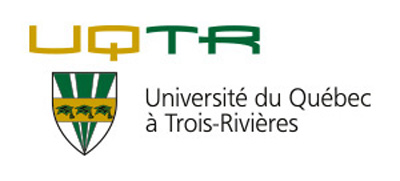Related projects
Discover more projects across a range of sectors and discipline — from AI to cleantech to social innovation.
Mitacs brings innovation to more people in more places across Canada and around the world.
Learn MoreWe work closely with businesses, researchers, and governments to create new pathways to innovation.
Learn MoreNo matter the size of your budget or scope of your research, Mitacs can help you turn ideas into impact.
Learn MoreThe Mitacs Entrepreneur Awards and the Mitacs Awards celebrate inspiring entrepreneurs and innovators who are galvanizing cutting-edge research across Canada.
Learn MoreDiscover the people, the ideas, the projects, and the partnerships that are making news, and creating meaningful impact across the Canadian innovation ecosystem.
Learn MoreWireless relaying has been recently proposed as a promising method in wireless communications that offers considerable performance improvement without the need of high transmission powers. Its operation is based upon the concept of deploying relay terminals in order to forward the information sent by a source terminal to a destination terminal. In this way, the system is able to overcome potential obstacles between source and destination and can take advantage of the available multiple paths and thus exploit the beneficial effects of spatial diversity.
As opposed to half-duplex relaying, in full-duplex relaying the relay terminal receives the signal incident from the source terminal and forwards it to the destination in the same transmission interval, without any sort of buffering [1]-[2]. The advantage of this concurrent retransmission is an increased efficiency in terms of transmitted data rate, with some performance cost. That is, allowing the transmission and reception to occur at the same time offers a data rate equivalent to the conventional wireless communication schemes where no relaying takes place, yet the message received at the relay is corrupted by the signal being forwarded at the same time, causing self-interference which leads to performance degradation. To this end, the main scope of this project is to thoroughly investigate the potential of fullduplex relaying, by jointly taking into account the practically attainable data rate, as well as the performance limitations due to the aforementioned self-interference. Along with the theoretical analysis, the anticipated research will include the potential practical constraints of implementing full-duplex relaying in applications where either fixed (i.e., infrastructure-based) relays or mobile relays are deployed. In this respect, considering the possibility of separating the transmitting and receiving antennas at the relay terminal, the potential of full-duplex relaying will be examined and analyzed as a function of the isolation between the receiving and transmitting ends. In the same context, the effectiveness of interference-cancellation methods employed at the relay terminal will be investigated, both in terms of achievable performance
and complexity, taking into account feasibility issues that may be encountered in practical setups. The results will then be compared with that of half-duplex relaying, both in terms of diversity performance and achievable data rate, aiming at a broad and thorough comparison between full-duplex relaying and its half-duplex counterpart.
The Globalink student will join the wireless communications lab in the Department of Electrical and Computer Engineering at the University of British Columbia and conduct research in the area of full-duplex relaying. The theoretical part of the project will include the mathematical modeling of the problem, writing computer programs for simulating full-duplex relaying, as well as performance analysis.
Dr. Robert Schober
Tarun Baranwal
Engineering - computer / electrical
Information and communications technologies
University of British Columbia
Globalink Research Internship
Discover more projects across a range of sectors and discipline — from AI to cleantech to social innovation.
Find the perfect opportunity to put your academic skills and knowledge into practice!
Find ProjectsThe strong support from governments across Canada, international partners, universities, colleges, companies, and community organizations has enabled Mitacs to focus on the core idea that talent and partnerships power innovation — and innovation creates a better future.













































































































































































































































































































